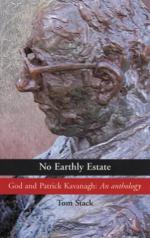|
This section contains 3,465 words (approx. 12 pages at 300 words per page) |

|
Kavanagh limited himself, it is true, to writing about himself only and the ways of life that formed him, although he extended his range somewhat in his journalism. But after Yeats and Joyce, immediately after them, perhaps self-limitation was the best course for an Irish writer, since the history of the human race, the nature of the unseen world, the possibilities of linguistic experiment, and what Kavanagh liked to call contemptuously "the Irish thing" all had been adequately covered. What was left? Daily life. Mud, stones, flowers, food, drink, faces, joy, sickness, hope, despair, spite, resentment, family, love, hate, and the occasional intimation of—something. No symbols anywhere. In "Is" (1958) Kavanagh wrote: "The only true teaching/Subsists in watching/Things moving or just colour/Without comment from the scholar." Kavanagh knew that it was difficult for a poet to get by without adopting some symbol or theory as...
|
This section contains 3,465 words (approx. 12 pages at 300 words per page) |

|


